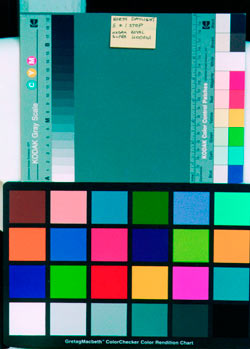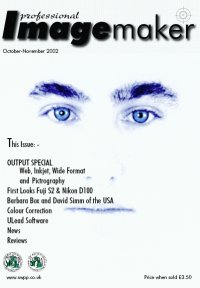articles/Cameras/kodakroyalsuprafine-page1
Kodak Royal Supra Fine@400 - part 1 of 1 2
by Mike McNamee Published 01/10/2002

For the eagle eyed these films are about as sharp as it gets for 400ASA. The latitude in the bright sunlight has held the detail in the white feathers but still allowed a 300mm lens to be hand held at 1/4000th at f4.0.
In September, Kodak will introduce a new range of 35mm colour negative films at 200, 400 and 800-speed rating. They are to be called Kodak Royal Supra. The new range is to replace the Kodak Royal and Kodak Professional Supra stock.
The films incorporate the latest short red spectral sensitivity to improve flesh tones. Flesh tones are very much a key requirement to our members and so we were pleased to get hold of some pre-production material to test. We looked at the 400ASA offering and took 5 rolls along to Warwick Castle on a day out (they call this work?).
Before we went we also shot some Macbeth Targets under various light sources and bracketed from 100ASA to 1600ASA. For processing we chose a high street lab, did not ask for any special favours, and analysed the results. The lab processed onto Agfa paper. Our results were therefore at the mercy of the processing lab, just as the images on this page are at the mercy of the transfer to CMYK and out to the printed page.

A bit boring to look at but we shot Macbeth charts at 5 exposure levels in a number of light sources. This was 400ASA in open shade.
Our first impressions were good. The grey tones were close to neutral for fluorescent lighting, open shade and daylight. In the Macbeth chart the ISO400 shot had an average colour error of 10 Lab points (see the articles on printing in this issue for comparison). Within this spread the flesh tones were 6.0 and 4.8 in Lab and (significantly) only 5.3 and 3.8 in the more sophisticated CIEDE2000 measurement. The CIEDE2000 error in the flesh tones was broken up into 0.8 for the lightness, 2.5 for the saturation and 2.7 for the hue. The saturation was smaller and the hue was less red. Only an experienced colourist would stand much chance of working these values out by eye and so for all practical intents this is almost as good a result as you can get.
On the exposure tests there was no change in the average error when over exposing by 2 stops (100ASA). Underexposing by two stops (i.e. pushing to 1600ASA) doubled the average error to 19.7. However the tests specifically on the flesh tones showed the error to be less sensitive to exposure and it was actually the same value at 100 and 1600 ASA. In practical terms it looks like you can get away with under exposing by 1 stop but not by two stops. There are instructions for push processing in the leaflet that comes with the film. As with all Kodak materials the technical data is very thorough.
You are currently on page 1 Contact Mike McNamee
1st Published 01/10/2002
last update 09/12/2022 14:55:35
More Cameras Articles
There are 16 days to get ready for The Society of Photographers Convention and Trade Show at The Novotel London West, Hammersmith ...
which starts on Wednesday 14th January 2026





